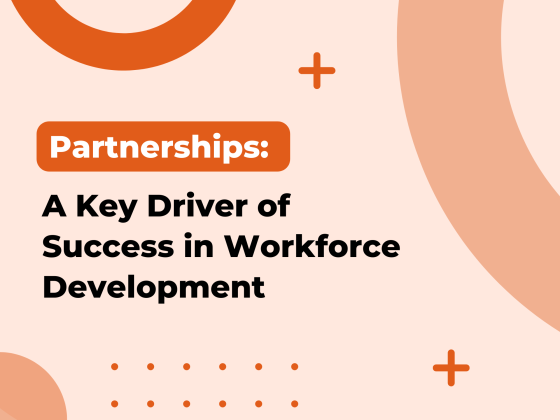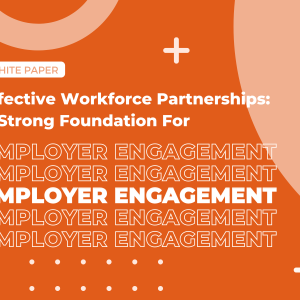Employer Engagement Strategies: A Key Driver of Success in Workforce Development
In our extensive experience assisting clients in constructing robust and sustainable information systems for community-oriented workforce development, we have had the privilege of collaborating with numerous nonprofits. While workforce development organizations rightly prioritize the elimination of employment barriers such as childcare, training, transportation, and technical skills, the significance of engagement and long-term partnerships with employers often goes unnoticed. To shed light on this vital aspect, our team has compiled a comprehensive guide titled “Effective Workforce Partnerships: A Strong Foundation for Employer Engagement.” Here, we present a glimpse of the invaluable insights on employer engagement strategies detailed in the guide. We encourage you to access the free download for a comprehensive overview.
Key Stakeholders in Workforce Development Partnerships:
Successful strategic employer engagement strategies and partnerships involve the following key participants:
Employers (no surprises there)
Community-focused organizations
Educators
Economic agencies
Each group has distinct needs, motivations, and aspects of employer engagement that require their focus. Understanding the dynamics between these groups is critical for the overall success of any workforce development partnership.
Types of Partnerships:
While various viewpoints exist, three primary partnership models are commonly observed in the field of workforce development:
Hub and spoke: Typically, the lead agency collaborates with training partners/employers.
Inner and outer rings: Smaller groups in the outer rings handle operations, while the inner circle focuses on systemic change.
Full partnership: Partners assume equal roles and hold regular meetings.
To explore the specific nuances of these partnership models and enhance goal alignment among stakeholders, we invite you to download our guide.
Best Practices:
Identifying what works (and what doesn’t) within a partnership model demands expertise tailored to the context, alongside good old-fashioned common sense. Understanding the shared partnership mindset among involved parties, recognizing opportunities and priorities, and establishing replicable processes are all critical components to grasp.
Why and How?
Comprehending the reasons why all workforce development participants benefit from partnerships is essential for devising an effective employer engagement strategy. Employers may seek partnerships to discover qualified candidates, reduce costs, and access skill training that they cannot provide directly. Community organizations engage in partnerships to gain industry-specific knowledge, enhance credibility, and expand networks. Recognizing the value that workforce development partnerships offer to all stakeholders is pivotal.
The Long Game: Vision, Impact, Measurement
Crafting a vision for your organization’s workforce development partnership model requires time and deliberate effort. Equally important is establishing the appropriate processes and systems to accurately measure the impact of your endeavors on the broader community. Demonstrating outcomes and evaluating the success of ongoing partnerships are fundamental drivers of long-term success.
If you’re interested in learning more about how effective employer engagement can drive workforce development success, we invite you to download our comprehensive guide today!




